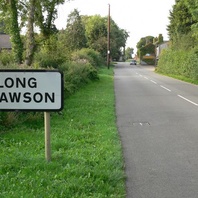
Viking Names
Long Clawson
Long Clawson, in the Framland Hundred of Leicestershire, likely comes from the Old Danish male personal name Klak (Old Norse Klakkr), an original byname probably meaning ‘a lump, a clod’. This personal name is frequently found throughout the Danelaw and occurs in other place-names such as Claxby, Lincolnshire, and Claxton, North Yorkshire. Alternatively, the first element has been suggested to be Old English clacc ‘a hill, a peak’. The second element is Old English tun ‘an enclosure; a farmstead; a village; an estate’. The village is variously described as in the Vale referring to the Vale of Belvoir, and since c. 155o the affix had been Long from Old English lang ‘long’ likely because the township is of linear formation and is approximately one mile in length.
Read More
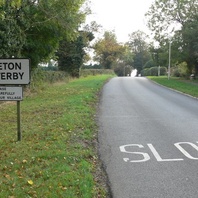
Viking Names
Smeeton Westerby
Smeeton Westerby, in the Gartree Hundred of Leicestershire, was originally two separate settlements. The earlier settlement is Smeeton which comes from Old English smið ‘smith, a worker in metal’ and Old English tun ‘an enclosure; a farmstead; a village; an estate’. The later settlement, Westerby, is a Scandinavian compound from Old Norse vestr ‘west, westerly’ and Old Norse by ‘a farmstead, a village’. Westerby is presumably an offshoot of Smeeton as the name refers to its location being slightly to the west of Smeeton.
Read More
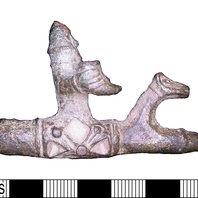
Blog Post
Viking Leicestershire: The Artefactual Evidence, Part 2 Metal-detected Objects
Metal detecting is adding greatly to our knowledge of Scandinavian Leicestershire. At the time of writing, there are 130 objects recorded on the Portable Antiquities Scheme database that are Scandinavian in style, including coins (see blog) and objects now in museums (see part 1). Although recorded on the Portable Antiquities Scheme database, all finds discussed below remain in private ownership. A Borre-style copper alloy disc brooch, (c) Leicestershire County Council, CC BY 2.0 The two most important finds are ‘Viking’ disc brooches. A gilded Jelling-style brooch from Melton depicts two gripping beasts (LEIC-36241D) and will be loaned to Melton Carnegie Museum in the spring . The other is a disc brooch from Cossington (LEIC-E7A016) with pseudo-filigree gilding which is rare in such brooches. Dr Jane Kershaw has identified this brooch as probably Danish from the late ninth or early tenth century, i.e. from the period shortly after the Great Army arrived and the Danelaw was established. There are three Anglo-Scandinavian Borre-style knot brooches from Leicestershire. These are made in a Scandinavian style but were manufactured in England. Their distribution, firmly within the Danelaw, suggests a ‘Scandinavian’ market for jewellery that reflected the styles of Scandinavia, hinting at nostalgia for the Scandinavian homeland and a desire to express Scandinavian identity. one was found just east of Melton (LEIC-782CD2), another at Goadby Marwood (LEIC-604DE5) and the last at Frisby on the Wreake (LEIC-CD4F45). This last place-name is interesting because it reflects the dominance of Old Norse in the area but points to the main settler there being Frisian and indicates that the Great Army was probably not purely Scandinavian. Some of the other artefacts recorded incude an unusual Borre-style triangular mount from Great Bowden (LEIC-48A221), very rare stirrup mount-like strap ends from Long Whatton (DENO-083C15) and Donington Le Heath (LEIC-982247), an unusual Urnes style strap end from Kirby Muxloe (LEIC-3E15B5), and a vertebral ring chain decorated strap end from Osbaston (LEIC-AE3855). Harness fittings and stirrup mounts make up about half the total and these are termed ‘Anglo-Scandinavian’. Some have direct Scandinavian parallels, some are thought to be locally made, influenced by settlement and possibly Cnut‘s reign. One rare type of stirrup mount, only found in eastern England occurs as a very rare pair from Peckleton, Leicestershire LEIC-8D1AC0 and LEIC-8C54F0. You can read more about these on the PAS blog. A Viking Age prick spur, (c) Wendy Scott Lastly, we have two very rare and enigmatic objects. The first, a possible prick spur (LEIC-EEF651), from Loughborough among a small but significant scatter hinting at Scandinavian activity. It depicts a helmeted, drinking-horn-wielding man and has two parallels: both are from Germany, and it has been suggested the figure may be a Slavic God. How did it get to Loughborough? Given its suggested date range 900-1200, it could have arrived with a Scandinavian settler or it could have arrived later and be pure co-incidence it ended up near Scandinavian objects. The other is even more of a mystery (LEIC-0A4CB4). It may be a cart fitting, but it has no known parallels. Its decoration screams Viking with its gilded interlace, moustached face mask and triskele-wearing bearded beasts heads. You can read further discussion about it in a guest post by Dr Rena Maguire on our blog. I am excited to report that the finder is probably going to donate this so that it can go on display. These objects highlight the importance of recording with the Portable Antiquities Scheme. Each object is adding to a network of evidence that illuminates this period. They demonstrate the range of material culture that was popular in the Viking Age and point to enduring connections between the Danelaw and Scandinavia. The last two especially show that by recording a mystery we may eventually find a parallel and enhance our knowledge later.
Read More
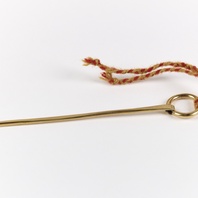
Viking Objects
Reproduction Ring-Headed Pin
A reproduction ring-headed pin used for fastening cloaks. Pins like this were common in Ireland and the western British Isles, and spread further afield under Viking influence.
Read More
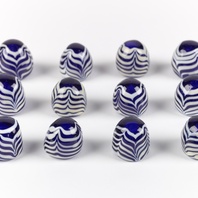
Viking Objects
Reproduction Glass Gaming Pieces
These are reproductions of a conical glass stud found in Lincolnshire, interpreted here as gaming pieces. However analysis of the original on which they are modelled suggests that it could also have been a glass fitting on decorative metalwork.
Read More
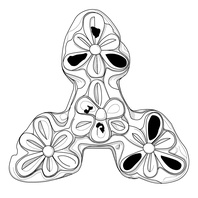
Viking Designs
Drawing of a Carolingian Trefoil Mount
Drawing of a copper alloy and gilded Carolingian mount with niello inlay found in Leicestershire. The mount has holes drilled through it for affixing to a surface, possibly a book, or perhaps to repurpose it as a pendant.
Read More
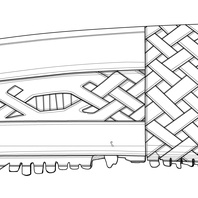
Viking Designs
Drawing of Bone Comb
A drawing of an intricately decorated bone comb found in Lincoln.
Read More
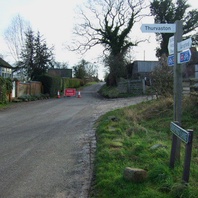
Viking Names
Thurvaston
Thurvaston, in the Appletree Hundred of Derbyshire, comes from the Old Norse male personal name Þurferð and the Old English tun ‘farm, settlement’. It is thus a hybrid name. The same personal name appears in Thoroton in Nottinghamshire. This personal name normally appears in Scandinavian sources in its contracted form, Þórðr, while the full form appears in runic and other sources in Sweden. Thurvaston is a joint parish with Osleston.
Read More
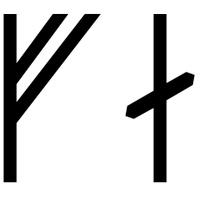
Viking Names
Thorfast
Þorfastr is a common male name in the eastern part of the Viking world – it is common in Swedish runic inscriptions and is even found in the inscription on a rune-stone fragment found in Finland, as well as a couple of Danish ones, but it does not occur in any Norwegian or Icelandic texts. It can be found in the runic inscription on the Lincoln comb-case.
Read More
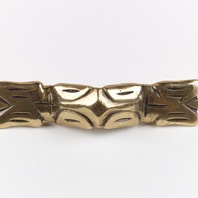
Viking Objects
Reproduction Ansate Brooch
A reproduction, copper alloy, ansate brooch based on an example from York. Two copper alloy examples of ansate brooches, also known as equal-armed brooches, were found at 16-22 Coppergate. These brooches are characterised by a narrow arched bow and terminal heads of identical form. The design of the brooches from Coppergate are a variant known as ‘caterpillar’ type. Asnate brooches are dated to between the seventh and ninth centuries though the finds at Coppergate may extend their popularity into the tenth century. The ‘caterpillar’ variety is typically geographically limited to areas bordering the North Sea. The quantity found in England, however, may indicate local manufacture. Brooches were a typical part of female dress. Scandinavian brooches came in a variety of sizes and shapes which included disc, trefoil, lozenge, equal-armed, and oval shapes. The different brooch types served a variety of functions in Scandinavian female dress with oval brooches typically being used as shoulder clasps for apron-type dresses and the rest being used to secure an outer garment to an inner shift. Anglo-Saxon brooches do not match this diversity of form with large disc brooches being typical of ninth century dress styles with smaller ones becoming more popular in the later ninth and tenth centuries. However, since disc brooches were used by both Anglo-Saxon and Scandinavian women they are distinguished by their morphology. Scandinavian brooches were typically domed with a hollow back while Anglo-Saxon brooches were usually flat. Moreover, Anglo-Saxon brooches were worn singly without accompanying accessories.
Read More
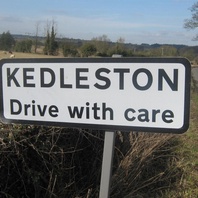
Viking Names
Kedleston
Kedleston, in the Appletree Hundred of Derbyshire, is a hybrid formation of the common Old Norse male personal name Ketill and the Old English element tun ‘farm, settlement’.
